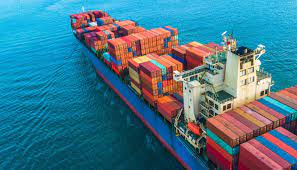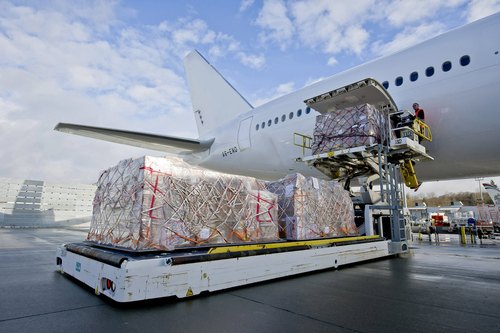Rising Fuel Costs Impact On Logistics
The era of cheap gas is over. With record-high prices continuing to grow, supply hiccups impacting the production of everything from refrigerators to automobiles, and a stubborn resurgence in Covid-19 cases across China that have caused port logjams which could result again last year’s supply chain delays – it’s not just your typical headaches we’re talking about here but potentially something much worse if left unchecked!
Across the entire manufacturing and distribution industry, businesses continue to face challenges on all fronts—from struggling to find talented workers to adjusting their balance sheets to meet inflated commodity prices. One pain point that is being felt by businesses of all structures and sizes is rising fuel costs.
While the first quarter saw parcel carriers report strong earnings and growth, it is unlikely that this trend will continue. Painful inflation has already made its presence felt with higher costs for goods throughout all industries; shrinking consumer paychecks as well as increasing living expenses across the board mean there’s less money coming in than ever before (not just from shipping fees). And now we have rising interest rates to worry about too!
As organizations continue to cut and reallocate costs due to increasing prices across, many are beginning to reassess the shipping methods they have used in the past, looking for opportunities to save on their expenses and find valuable efficiencies. Regardless of the avenue used to ship a product, part, or raw material, the energy required to move them will always comprise a significant part of the overall shipping cost. As fuel prices continue to rise, companies are faced with the options of operating at a loss, charging their clients a higher rate, or exploring out-of-the-box ways to save on costs.
On April 4, 2022, the national average diesel price was $5.14 a gallon, almost $2 higher per gallon than a year prior, according to the U.S. Energy Information Administration. Just what are the impacts and adaptation methods companies are both seeing and utilizing?
The road to recovery seems dim for the logistics industry. Painful inflation, shrinking consumer paychecks, and increasing living expenses across the board have created a challenging environment that is only getting darker by day as economic problems brew beneath our feet like an openness between two worlds: The surface world of money where things seem fine on first glance but then crumble under pressure; And underneath all this lies disaster waiting just below where we can’t see it yet–largely due at least partially because there has been no recognition nor attention paid toward what might happen next…

Truckload Shipping Impact
Trucking, the most popular form of shipping for U.S.-based companies, accounted for 72% of all freight in 2019. Though compounded with existing labor shortages and an increased demand to meet faster consumer shipping expectations, rising diesel costs have a direct impact on trucking companies and their customers. To ensure they are still turning a profit, trucking companies apply a standard fuel surcharge to each load to cover inflated fuel prices.
Additionally, rising diesel costs cut into trucking margins through their post-delivery, empty-cargo “deadhead” miles, and other component costs, further driving up prices. Furthermore, if a truck breaks down while on the road, mechanics find it difficult financially to meet the costs of making roadside assistance calls.

Ocean Freight Shipping Impact
Already facing higher costs from existing supply chain issues, such as the lack of both storage and port space, ocean shipping costs are further ballooning due to the current price of fuel. Often set apart from other methods due to the low cost and higher margins, companies are beginning to look elsewhere as the potential to make a profit becomes more difficult.
Like trucking, ocean carriers are offsetting these costs with surcharges, because fuel makes up a large majority of its total cost. Additionally, many carriers will also practice “slow steaming” on ships. This is the process of reducing speed (often to ~15 knots, rather than ~22 knots) to cut down on fuel consumption, similar to the way trucking companies govern the trucks’ top speed to reduce fuel consumption. While this cost-mitigation strategy does slow down already exasperated shipping times, it reduces costs for carriers as well as cuts down on their emissions.

Air Cargo Shipping Impact
Air cargo has seen its popularity rise in recent years as many companies (e.g., Crocs Inc.) began to double down on their investment to circumvent supply chain slowdowns presented by other existing options. As jet fuel prices continue to increase, however, that added value of shipping speed—while protecting margins—is becoming increasingly difficult to justify.
Prior to today’s increased prices and a fragmented supply chain, air freight was already widely recognized as the most expensive option to ship goods. U.S. jet fuel prices are up 82% since last year, according to the International Air Transport Association, their highest since 2008.
Oftentimes, many products and goods shipped by air are packed within the belly of existing commercial planes. With more than half of air freight being transported this way, the decline in passenger air travel has had a significant impact on the availability of air freight on passenger flights.

Train Shipping Impact
As fuel and diesel rates rise, many companies may begin to set their sights on rail shipping as a more cost-effective and sustainable option for moving products, at least at some point during their transit.
According to the Federal Railroad Administration, trains are four times more fuel-efficient than trucks and can move one ton of product 470 miles on a single gallon of diesel fuel. Because of these added efficiencies, required fuel accounts for a smaller percentage of the total operating cost compared to other methods. This enables companies to save money and earn higher margins, proposing a new opportunity to many that would have otherwise looked elsewhere in the past.

Accounting Implications
Companies accounting for the cost of inventory in accordance with Generally Accepted Accounting Principles in the United States (“U.S. GAAP”), typically record the cost of freight as a component of the carrying cost of inventory. Given the potential for abnormal freight costs in the current operating environment, manufacturers must assess if the additional costs are being recorded as a period charge in accordance with Accounting Standards Codification Section 330-10-30-7. Distributors will need to keep a keen eye on the assessment of the lower cost or net realizable value of inventory, given the potential impact of the added freight costs excessively eroding margins.
As businesses continue to reexamine their processes and find opportunities to save on costs, the shipping avenues they employ will be top of mind. As these supply chain challenges continue to have an effect across all industries, it’s never been more important to be flexible and informed, as well as consider options that may have been previously overlooked.
Looking for solutions? Let’s talk! Contact us today at IQ Transit and see what solutions we may be able to implement for your business!
